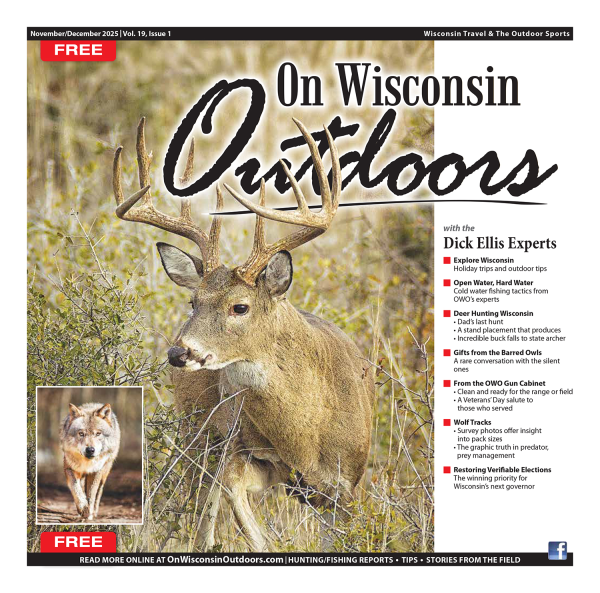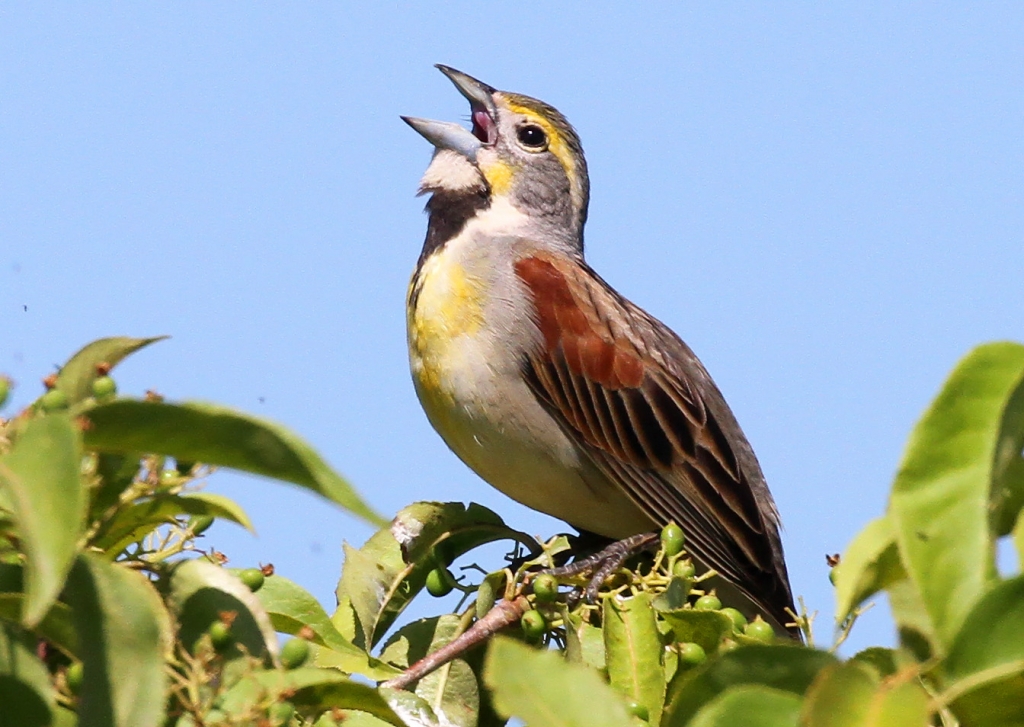Wisconsin Sees Influx Of Dickcissels And Other Plains Birds
BIRDING AND BIRD CONSERVATION
Wisconsin is home to over 300 species of birds and thousands of people who enjoy birds. Explore the links below for information on birds, bird identification, birding locations and how to get involved in conservation efforts.
STATEWIDE BIRDING REPORT AS OF JUNE 17, 2021
Named for their distinctive song, Dickcissels are now prevalent in fields and grasslands across Wisconsin. / Photo Credit: Wisconsin DNRThis year continues to be better than average for Wilson’s phalaropes, yellow-headed blackbirds and now another Great Plains species, the Dickcissel. Large numbers of this sparrow-like grassland bird have been reported from weedy fields, pastures and other dry open areas around the state.
Two keen observers in Douglas County recently tallied an incredible 397 singing males over just 36 miles of road that in a typical year may not host one! This influx of Dickcissels and other plains birds is thought to result from drought in their usual range. On the downside, numbers of Eastern bluebirds, Eastern phoebes, hermit thrushes and some other short-distance migrants remain far below average due to significant overwinter mortality caused by severe cold and ice in the southern U.S.
Northbound migration has generally come to an end, leaving nesting season to take center stage. The first fledged Baltimore orioles have been reported, though most are likely in the egg or nestling phase yet. Expect an increase in young for these and other neotropical migrants as we enter July. Earlier migrants and resident species are farther along in the breeding cycle as family groups of robins, blackbirds, doves, crows and ducks are already more prevalent.
If you continue to feed birds through summer, you may see family groups starting to appear soon. Be especially vigilant this time of year about using fresh food, cleaning feeders and keeping pets away from feeder areas where young birds are particularly vulnerable. Attract even more birds to your yard with a clean water source, whether it be a dish of shallow water, a small pool or large pond. A fountain or other source of trickling water is especially helpful as the sound draws birds from afar.
Topping the list of rare finds this week was a white-tailed kite at Crex Meadows in Burnett County, marking the state’s sixth record. June and July can be excellent months for finding unusual, warm-weather species so keep a watchful eye at field and feeders. Moreover, by the last week of June some southbound migration will become apparent as the first adult shorebirds begin to return from Canadian breeding grounds, often including some yellowlegs, least and solitary sandpipers and a few others. In the meantime, find out what others are seeing and report your finds to www.ebird.org/wi. Good birding!
– Ryan Brady, DNR Natural Heritage Conservation Program Biologist












